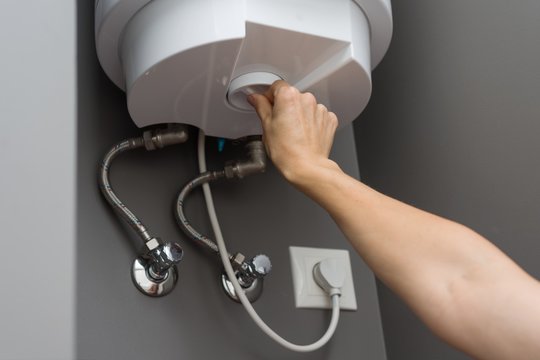Best Practices for Maintaining Your Home's Hot Water System
RatesHave you been on the lookout for know-how about Tips For Maintaining Your Hot Water Heater?

Hot water is crucial for day-to-day comfort, whether it's for a refreshing shower or cleaning recipes. To guarantee your hot water system runs successfully and lasts much longer, regular upkeep is crucial. This short article offers practical pointers and insights on how to keep your home's warm water system to prevent disturbances and expensive repairs.
Intro
Preserving your home's warm water system may appear complicated, however with a few straightforward steps, you can ensure it runs smoothly for several years to come. This overview covers every little thing from comprehending your warm water system to DIY upkeep suggestions and recognizing when to contact professional assistance.
Importance of Preserving Your Warm Water System
Regular maintenance not only expands the lifespan of your warm water system but likewise guarantees it runs efficiently. Ignoring upkeep can result in lowered efficiency, higher power expenses, and also early failure of the system.
Indicators Your Warm Water System Needs Upkeep
Recognizing when your hot water system requires focus can avoid significant concerns. Look out for indications such as irregular water temperature, odd sounds from the heater, or rusty water.
Comprehending Your Warm Water System
Prior to diving into upkeep jobs, it's helpful to comprehend the standard parts of your hot water system. Usually, this consists of the water heater itself, pipes, anode rods, and temperature controls.
Regular Monthly Upkeep Tasks
Normal monthly checks can assist catch small concerns prior to they rise.
Purging the Water Heater
Flushing your water heater eliminates debris accumulation, boosting performance and lengthening its life.
Monitoring and Replacing Anode Rods
Anode rods avoid rust inside the storage tank. Checking and changing them when worn is critical.
Inspecting and Adjusting Temperature Level Setups
Readjusting the temperature level setups makes certain optimal efficiency and safety and security.
Do It Yourself Tips for Upkeep
You can execute numerous upkeep tasks on your own to keep your hot water system in top condition.
Looking for Leakages
Consistently examine pipes and connections for leakages, as these can bring about water damages and higher bills.
Testing Pressure Alleviation Valves
Checking the pressure safety valve ensures it functions properly and prevents excessive pressure build-up.
Shielding Pipes
Insulating hot water pipes decreases heat loss and can conserve power.
When to Call a Professional
While DIY upkeep is advantageous, some issues call for expert competence.
Complicated Issues Calling For Expert Assistance
Examples consist of major leakages, electrical problems, or if your hot water heater is regularly underperforming.
Routine Specialist Maintenance Benefits
Specialist maintenance can consist of extensive inspections, tune-ups, and ensuring conformity with safety criteria.
Final thought
Normal maintenance of your home's warm water system is crucial for effectiveness, longevity, and expense financial savings. By complying with these tips and understanding when to seek specialist help, you can make certain a reputable supply of hot water without unforeseen disturbances.
How to Maintain an Instant Hot Water Heater
Before tinkering with your hot water heater, make sure that it’s not powered on. You also have to turn off the main circuit breaker and shut off the main gas line to prevent accidents. Also turn off the water valves connected to your unit to prevent water from flowing into and out of the appliance. 2. When you’re done, you have to detach the purge valves’ caps. These look like the letter “T†and are situated on either side of the water valves. Doing so will release any pressure that has accumulated inside the valves while at the same time avoid hot water from shooting out and burning your skin. 3. When the purge valves’ caps are removed, you have to connect your hosing lines to the valves. Your unit should have come with three hoses but if it didn’t, you can purchase these things from any hardware or home repair shops. You can also get them from retail stores that sell water heating systems. Read the user’s manual and follow it to complete this task properly. When the hosing lines are connected, open the purge port’s valves. 4. You should never use harsh chemical cleaners or solutions when cleaning your unit. Make use of white vinegar instead. It should be undiluted and you’ll probably use about 2 gallons. 5. Now flush your water heater. This task should probably take about 40 minutes. We can’t give you specific directions for this because the procedure is carried out depending on the type, model and brand of your heater. With that being said, refer to the user’s manual. 6. When you’re done draining the unit, you have to turn off the purge port valves again. Remove the hosing lines that you earlier installed on each of the water valves. Put the valve caps (purge port) back in their respective places and be very careful so as not to damage the rubber discs that are found inside these caps. 7. Now that everything’s back in place, check your user’s manual again to find out how to reactivate your water heating system. 8. Once it is working, turn one of your hot water faucets on just to let air pass through the heater’s water supply pipes. Leave the tap on until water flows smoothly out of it. https://www.orrplumbing.com/blog/2014/september/how-to-maintain-an-instant-hot-water-heater/

We were shown that editorial on How to Maintain a Hot Water Heater in a Few Simple Steps through a buddy on a different web blog. Enjoyed our piece of writing? Please quickly share it. Help other people find it. Thanks for taking the time to read it.
Request Your Service